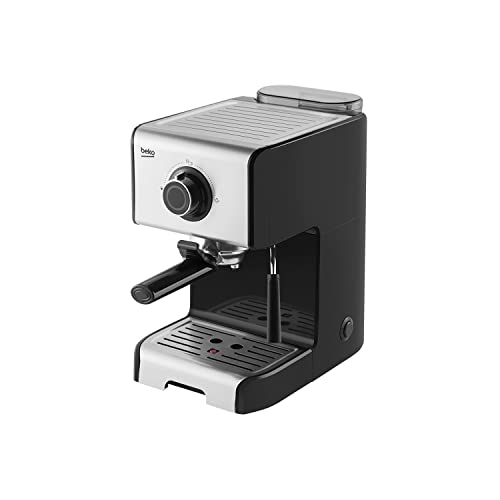Coffee and Espresso Machines
Espresso machines make use of pressure to push water into finely roasted and tamped beans. They create a rich, flavorful brew.
Experts at the Good Housekeeping Institute recommend models that brew with the minimum pressure of 9 bars in order to ensure the highest extraction. Beware of manufacturers that claim to use more pressure than what is required.
Types
The espresso machine, also known as a espresso and coffee maker, makes the highest-quality, concentrated coffee you love from your favourite cafe drinks using an average of 9 bars of pressure. These machines typically have various features, including temperature control and brew strength with programmable brewing as well as different sizes of drinks. Some machines can have steam wands, either manual or automated, for creating texturized milk for the latte art. There are three kinds of latte art: semi-automatic, super-automatic and automatic. Each model has its own degree of supervision and control.
The most popular espresso machine model for specialty coffee shops is semi-automatic models. This allows baristas to have complete control over the brewing process, however, it's not as user-friendly as a fully automatic machine. It is still necessary to grind beans, fill and tamp the portafilter, and adjust the extraction time to ensure the highest espresso shot of the highest quality.
Automatic machines come with a built-in mill and measure and measure your grounds and. They automatically disperse the proper amount of water to extract the espresso, and they often have a programmable beverage size function. Our lab tests revealed that they were the most well-liked kind of espresso machine. They offer a great combination of control and consistency.
Functions
Whether you choose a pump-driven machine or a steam-driven machine, you'll be able to access a reservoir that holds the water needed to make your coffee. There's also an element of heating that heats the cold water, generating the high pressure needed to extract coffee from ground.
When the brew lever is lifted, it triggers the water inlet cam, which seals the valve for pre-infusion, so only hot water that has been pressurized to the maximum pressure flows through the portafilter and into ground coffee. coffeee takes around 25 seconds for the water to make espresso.
The insulated tubing called the hot-water tubing runs from the reservoir and spout on top of your machine. The heating element of resistance heats the water as it flows through the metal warming plate and the aluminum tube.
After the spout is turned on the cup, place it under the spout, so that the espresso flows into the cup through the portafilter. The coffee maker also include a steam wand which you can use to heat and froth the milk for drinks that are espresso-based, such as cappuccino or lattes.
Automatic machines eliminate the guesswork involved in making coffee. They operate with just one button, are programmable and can grind and measure beans for you and to crush them down. They typically be the most efficient overall in our Lab tests since they are easy to use and don't require any user expertise.
Materials
The inside of an espresso machine is a world of copper tubes, boilers made of stainless steel and intelligent firmware. Although they might appear to be complicated the primary purpose of these machines is to force hot water into finely ground coffee.
When you are looking for an espresso maker, consider the dimensions and space requirements, drink options, energy-saving options and brewing precision. Look for a steam button to turn on the steam wand. This can be used to make lattes and frothing milk. The front of the machine features the pressure gauge which will provide the operating pressure for the boiler and pump. Look for a coffee maker that has two needles so that you can both the maximum and minimum pressure.
If you're looking for more then just espresso then choose one that has different brew sizes. This includes ristretto. There are also models that come with a removable milk hopper for hands-free, hassle-free frothing and the ability to switch between different types of milk. If you have hard water, you should choose a model with an integrated softener for your water to prevent mineral buildup and keep your espresso tasting fresh.
Some manufacturers use a PID (proportional integral, integral digital) thermostat to maintain an exact temperature range for espresso making. This feature allows for a consistent, high-quality cup of espresso every time. It also helps reduce cost of energy, as the machine only runs when it's needed.
Maintenance

Since espresso and coffee machines become more widely available for home use, the proper maintenance of this equipment is becoming more important. The right equipment can make the world of difference in your cup of coffee, but it's only true if your machine is in good working order.
Regular maintenance and cleaning should include everything from cleaning of the group head, steam wand and water filter, to descaling and changing the water filters regularly. If you make between two and five coffees per day, it's recommended to clean the machine's main parts once a week. Certain components of the machine will require cleaning every two to three weeks. These include the water tank and the grinder.
You should also backflush your machine every week. This is done by sealing the portafilter and running the brew cycles a few times. This will remove any coffee ground or oil that has been left behind. You can also clean the portafilter by using the brush and cleaner designed specifically for espresso machines.
Maintaining your coffee machine and espresso correctly can help it last longer. The majority of professional espresso machines used in offices and cafes cost a lot of money, and it is vital to keep your machine in good condition so that it can last for as long as is feasible.
